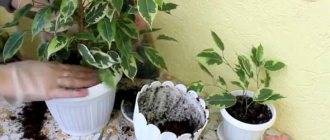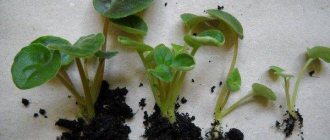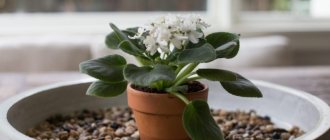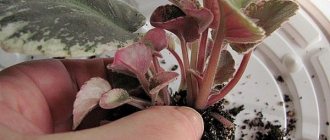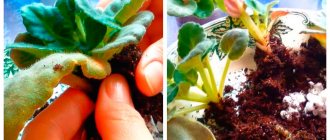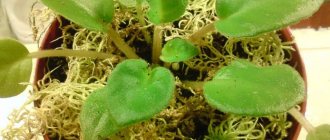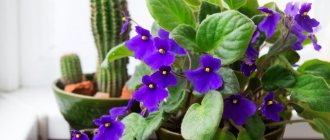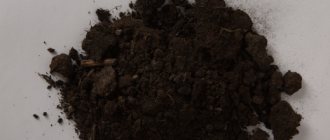Of course, violets are stunning flowers, and no one would refuse to grow them in their window. However, people are interesting creatures: even when they get what they want, they begin to want it even more. And, since violets are so charming and beautiful, why not see more of their cute and beautiful flowers on your windowsill every day? In addition, this means expanding the collection, new varieties and new experiences. And also, of course, a new experience of caring for a significantly larger number of plants at the same time. In any case, solving the problem of wanting to have a large number of flowers can be quite simple. For violets, this solution, however, is rather non-obvious, and novice flower growers may not have even heard of it, but experienced and seasoned ones already understand perfectly well what we are talking about. That’s right, we will touch on such a topic as the propagation of violets by leaves, which, by the way, has been recognized by experienced breeders and flower growers as the best and most effective method of propagating this lovely flower.
In addition, it should be noted that it is very simple, and therefore absolutely everyone can master it, if, of course, they want to. It also offers a fairly high percentage of germination and low financial costs, and therefore propagating violets by leaf is better than buying seedlings or seeds in all respects.
In this article we will tell you exactly how this procedure is carried out and how you can carry it out correctly without harming the mother plant and getting wonderful shoots that will soon turn into wonderful flowers.
Characteristic
The ancient Greeks tried to root violets from leaves. This flower was special for them; they worshiped it, considering it a symbol of eternal love and fertility. The petals of the plant were added to wines, dishes and love potions were prepared from them. Despite its idealistic vocation, in our time violets are grown to decorate living spaces, and many believe that the flower attracts love and prosperity into the home.
Description of the plant:
- Violet is a perennial houseplant belonging to the violet family.
- The flower grows small in size - from 15 to 40 cm.
- All varieties of violets have the same structure of the root system - tree-like, juicy, dense structure.
- The stems are shortened, and due to slow growth, the leaves of the flower form very tightly to each other, forming rosettes.
- Radical green mass and flower stalks begin to form in the spring during the period of active photosynthesis. At the beginning of spring, the flower can already please its owners with the first buds.
- The flowering is single, consisting of five petals, which are lanceolate and ovoid in shape.
- Violet leaves are whole, round in shape, with heart-shaped or oval contours, with notches along the edges.
- The leaves may have a smooth or velvety surface. The latter are found in most varieties.
- Active flowering begins in early spring and continues continuously until mid-autumn.
- After flowering, the beautiful inflorescences form seed pods. These boxes are oblong or oval in shape and smooth to the touch.
Violet has not only aesthetic properties, but also medicinal ones. The inflorescences, leaves and stems of the plant are used to make medicines that are used for various inflammatory processes and as antiseptics. The plant also helps greatly with kidney diseases, gastrointestinal tract and respiratory infections.
The therapeutic effect of violets is due to the content of the following substances:
- carotene;
- vitamin C;
- salicylic acid;
- glycosides.
Despite its rich medicinal composition and effectiveness in treating various diseases, the use of violet for hepatitis and glomerulonephritis is contraindicated. Excessive dosages and prolonged use of such medications are also dangerous, as this can lead to nausea, vomiting, and diarrhea. About 30 species of violets are grown in home floriculture, and there are about 600 species in the world. Scientists divide them into 16 genera, of which there are wild violets, forest violets, garden violets and indoor violets.
The most common types of violets grown indoors are:
| Type of violet | Description |
| Kimi's melodies | The leaf blades are wavy, folded into a symmetrical rosette. The inflorescences are white with two upper petals of blue. |
| The magic of love | The inflorescences are large, double, the petals resemble stars. Painted burgundy with a rich red tint and white trim. The foliage is deep green. |
| Black Prince | The inflorescences are distinguished by their unusual beauty. The petals are double, star-shaped, dark red. Leaf rosettes are medium in size, deep green in color with a red tint on the reverse side. |
| Admiral | The peculiarity of the variety is that the inflorescences are fused at the base of the petals, which makes them similar to bells. The Admiral has large flowers with a cornflower blue color, semi-double petals with wavy edges. The foliage has a pointed shape, deep green with a lilac-cream edge. |
| Shining bell | Blue flowers with wavy edges. In the center of the inflorescence there is a contrasting yellow eye. The leaf rosette has the correct shape, the foliage is of a uniform green color. |
| Satellite | A medium-sized leaf rosette (up to 15 cm), with light green leaves reaching 5 cm in length. The inflorescences are red-violet in color. |
Preparation of planting material
Rooting a violet from a leaf is quite simple, even if the leaf is broken, damaged, frozen or rotted upon delivery. For propagation in this way, a very small but healthy part of the leaf is needed. A flower takes root from the veins on a leaf; each such vein can produce one child.
If propagation is carried out from a damaged leaf, you must perform the following steps:
- remove the damaged part with a clean, disinfected blade, slightly capturing the healthy area;
- cut out fragments from the remaining healthy part of the leaf that will contain a vein, not even necessarily a central one, maybe a lateral one;
- rinse the sheet with a weak solution of potassium permanganate, leave it in the liquid for 15-20 minutes, which will eliminate any parasitic elements and prevent the process of rotting;
- dip the sections in crushed activated carbon;
- Allow the sheet to dry thoroughly, only then can you begin planting the cut fragments.
How to root a violet from a leaf, the photo shows an example of a section.
All the same manipulations must be performed before planting if propagation is carried out by a single leaf.
There are several ways to cut a sheet:
- cut the leaf so as to first cut out the central vein, and then cut each side part into three lobes, where there will be side veins branching from the central one;
- from the healthy part of the leaf, cut 2-3 strips containing 2 lateral veins, this gives a high probability of the appearance of two children from one cutting;
- an element cut from the upper lobe of a leaf, which will contain more than two thin veins, will take root well; children may appear from each;
- cut the leaf in half horizontally, each fragment will produce more than 2-3 children;
- if the leaf rot is large, you can cut it out so that a cutting from the central vein remains about 1 cm in height.
Regardless of the method of cutting the sheet, it takes 15-20 minutes. Leave these fragments alone in the air. This is necessary so that the sections are covered with film.
Look at the color
When choosing a violet leaf for rooting, be sure to look at its color - it should be as uniform as possible.
With a wrap, a slit, and buttons: how to create looks with basic skirts in spring
Not a warehouse, but a place to relax: how to decorate a balcony on a minimal budget
An investigation by Samara local historians confirms: “Zoya’s Standing” is a legend
This rule also applies to varietal violets with variegated leaves - for propagation it is better to choose those with the least contrasting spots. This is because the light areas are chlorophyll-free and have very few veins. This is why problems can arise with rooting.
Preparing the soil and planting site
In order for a violet to actively grow and develop, it needs nutritious soil of a certain composition. The soil mixture should have excellent air permeability, be slightly acidic and loose. Dense soil will not allow the root system to develop and produce new cuttings, and it will also slow down the flowering process. You can root a violet from a leaf only in a special soil, which can be purchased ready-made at any flower shop. Experienced gardeners prefer to prepare the substrate themselves.
To do this, you need to take the following materials in equal proportions:
- peat of medium acidity;
- river sand;
- moss;
- leaf compost;
- peat moss;
- black soil;
- charcoal.
Charcoal plays an important role for violets; it retains moisture, disinfects, loosens and prevents the substrate from drying out completely. Peat moss also has its positive aspects for the plant; it also retains moisture and at the same time prevents putrefactive processes from developing. The container for propagating violets is chosen to be small in size, not deep and no more than 5 cm in diameter, since their root system does not develop deep into, but along the surface of the soil. Plastic cups work great.
Holes are made at the bottom of the containers to allow excess moisture to escape. Fill 1/3 of the container with fine drainage (expanded clay, crushed stone, pebbles, etc.).
When the young shoots grow and outgrow their containers by half, only then should they be transplanted into larger pots. The violet bushes are carefully removed from the cups along with the substrate and placed in a prepared flowerpot. Soil is added from below and on the sides; there is no need to add soil from above, as this will clog the rhizome and prevent it from sprouting new cuttings. An adult plant should grow in flowerpots with a diameter of no more than 9 cm. The most suitable containers for violets are plastic or clay.
How to grow violets from seeds
When propagating from seeds, seedlings are provided with care at home, just like seedlings. They dive when the tiny rosettes reach 5 mm, variegated varieties - after enough chlorophyll has formed in the plates. At this stage, you can plant the violet not in individual cups, but in a common container.
If the color of the plates is of decisive importance during seed propagation, the first culling is carried out at the same time. Cover with cellophane until the seedlings take root. You can remove it when a new leaf appears.
Landing algorithm
There are several ways to root a violet from a leaf, but the most effective one, which gives 100% results, is planting it in the ground. Moreover, this method reduces the germination time of young shoots.
Advantages of planting a leaf in the ground:
- excellent for varieties of violets that are difficult to root by cuttings or in water, as a rule, these are mini varieties;
- planting the plant immediately in a permanent habitat;
- in the soil, the plant grows stronger faster, forms roots and produces new children.
The landing algorithm is as follows:
- For standard varieties of violets, take a leaf 3-4 cm long, for mini varieties - 1-1.5 cm.
- If necessary, the leaf is cleaned of damage, putrefactive and damaged parts are removed using a sharp blade, which is first wiped with an alcohol wipe.
- Planting material is disinfected in a weak solution of potassium permanganate. Keep the leaf in the product for about 15-20 minutes.
- After disinfection, the sheet is laid out on a paper towel to dry completely.
- Prepare a container for planting, make a drainage hole at the bottom and fill 1/3 with drainage. The remaining part is filled with a special substrate.
- The violet cuttings are planted in the ground, deepening it by 3-4 cm. If mini varieties are planted, they need to be buried by 1-1.5 cm.
- After planting, greenhouse conditions are created for the plant. Cover the cutting with a transparent container or film. Often a cut plastic bottle is used.
- The greenhouse is opened every day for ventilation, for about 15-20 minutes.
- When the cuttings become stronger and take root well, the greenhouse is removed completely.
- If necessary, the soil is moistened when opening the greenhouse, but not abundantly, only the top layer.
The optimal temperature for the plant during rooting is 22-25 ° C, and daylight hours are 12 hours.
Under what conditions do violets reproduce?
Violet is a rather finicky plant . She will not tolerate careless treatment. You can safely propagate these flowers all year round if there are opportunities to create comfortable conditions.
Time
During the warm period of the year, daylight hours are the longest, so spring and summer are considered favorable for the start of violet reproduction . If it is winter, then it is important to create additional lighting using a fluorescent lamp or other special devices.
Important! To achieve effective reproduction, the duration of daylight hours should not be less than 12 hours.
Humidity
During the flower propagation period, it is important to maintain a high level of humidity, from 50 to 60% . Dry air has a detrimental effect on these plants.
Temperature
Also an important factor. Maintaining the same temperature regime without sudden changes is the key to good development of violets . The optimal temperature in the room where you place the flowers should be within 24-27%.
The soil
The soil for violets should be breathable, loose and slightly acidic . You can select the appropriate soil in the store with the help of a qualified salesperson. But experienced gardeners prefer to obtain the substrate themselves , because it is not always possible to purchase truly high-quality soil.
Charcoal is used to create and maintain the required level of humidity, and turf soil is used as a soil loosening agent. Thanks to it, the soil will not dry out or become too wet.
Sphagnum must be handled with care, using in small quantities , because it can cause the process of rotting to begin.
Pot
For a leaf, peduncle or violet seed, take a small pot, the diameter of which is 4 cm , with special holes. As soon as the violet becomes large enough, it should be replanted.
If the diameter of the pot does not exceed 6 cm, then simply remove the violet and transfer it to a larger container, adding fresh soil. Also, do not forget about expanded clay . It is necessary to prevent water from stagnating in the soil.
Irrigation
You need to water the flower as needed. Water should only be used well-settled and at room temperature.
Important! Violet does not tolerate too wet soil.
Care
Violet is an unpretentious flower to care for, however, it is demanding on certain conditions. The plant does not like direct sunlight, does not like stagnant moisture, and does not like spraying. In order for the violet to regularly delight its owners with abundant and lush flowering, you should know the important rules of care.
Spraying, watering
It must be said right away that Saintpaulia does not tolerate spraying; if moisture gets on the foliage, they immediately begin to die. But you should approach watering the plant creatively and correctly.
There are several ways to properly water violets:
- Watering the substrate from above. To water from above, you must use some kind of equipment, for example, a small watering can, a douching bulb, or a syringe. Watering should be done carefully, without touching the leaf rosette; it is recommended to pour water along the edges. Since the soil chosen for violets is very loose, and there is a layer of drainage at the bottom, the remaining water from the pan must be removed after 20-25 minutes, since stagnant moisture can cause rotting of the root system.
- Watering into the pan. The pot of violets must be placed on a tray. Many people use the tray method of watering, as this will avoid overflowing. The roots of the plant independently absorb moisture in the amount they require. The remaining water in the pan after 25-30 minutes. drained.
- Wick watering. Many people are not even familiar with this method of watering, but it is very simple and convenient. To choose this method, you will need a synthetic tube with a diameter of 2-3 cm. The tube is placed in a ring in a pot, and a drainage layer is poured on top (you can do without it). The end of the tube is lowered into a deep pan of water. This method is great for mature plants or for owners who leave their violet greenhouse for a long time.
To moisten the soil, only purified, settled water at room temperature is used. Flower growers often add crushed activated carbon to the water, which allows them to disinfect the soil from diseases and pests. The frequency of watering depends on the room temperature and humidity level. The plant should be watered after the top layer has dried by 1.5 cm. This is approximately once every 3-4 days in the summer, and once a week in the winter.
Top dressing
Violet, as a flowering plant, needs regular feeding. Fertilizers ensure active growth of the root system, the formation of strong, juicy foliage and lush inflorescences.
The frequency of fertilization depends on the age of the indoor flower:
- the young plant is fed once every 2 weeks in very small concentrations;
- after rooting and transplanting to a permanent place - every 2 months;
- during flowering - once a week;
- during the rest period - every 20-25 days.
You need to feed the violet in the evening or on cloudy days so that the substances contained in the solutions do not burn the root system.
The choice of mixture depends on the stage of development of the indoor flower:
- when growing green mass and rooting - solutions and mixtures containing large quantities of nitrogen;
- during the formation of flower stalks - fertilizers based on potassium and phosphorus.
The dosage of fertilizers must be chosen taking into account the recommendations of the manufacturers, however, many gardeners advise reducing them by 2 times.
Transfer
After rooting from a leaf, the violet must be transplanted into a larger pot for permanent habitat. This will allow you to quickly gain green mass and produce new shoots. An adult plant also needs to be replanted. The process stimulates active growth and lush flowering. It is recommended to perform the procedure twice a year: in the spring during the period of active photosynthesis and in the fall before the plant goes into dormancy.
There are also other reasons why a plant needs replanting:
- the appearance of a white coating on the substrate;
- growth of the root system so that it extends beyond the drainage layer.
Temperature and humidity
The most favorable temperature for keeping violets at home is 20-24 °C. If the plant is grown in less warm rooms, this is manifested by a change in foliage color. And at high temperatures, flowering is reduced, it will no longer be so lush and abundant, and the size of the inflorescences will noticeably decrease. This is also reflected in the color of the petals; they are less saturated, and the color of the border disappears altogether. In drafts, Saintpaulias become sick, their foliage becomes covered with gray-brown spots, and the roots begin to rot.
As for humidity, violets tolerate drought more easily than waterlogging. The optimal indoor humidity for them is 50-60%, and adult plants feel very good even at a humidity of 30-40%.
Why is it not recommended to plant violets in a large pot?
The entire root system of Saintpaulia is located on the surface, without going deep. The pot prevents spreading “broadly” and the roots try to entwine the entire earthen lump.
If the pot is large, then when watering the plant we risk flooding it . The root system is not able to absorb water from a large volume of soil, and acidification occurs . Further, as a consequence, there is a violation of air exchange and rotting of the roots.
To prevent this from happening, the pot should be three times smaller than the size of the plant . When the diameter of the rosette exceeds the diameter of the pot by more than three times, you can transplant it into a larger pot.
Optimal pot sizes for violets.
Possible diseases and pests
Violets are quite often exposed to negative influences from the outside; they can be affected by insect pests or any diseases.
The most common problems:
| Problem | Signs | Fighting methods |
| Powdery mildew | The most dangerous disease that affects violets, the source of the disease is fungal spores. It appears as a white coating that affects the foliage and stem. | The problem must be dealt with using chemical solutions and mixtures, such as Topaz, Benlat, Fundazol. |
| Rust | Saintpaulia leaves become covered with a characteristic rusty coating, which under unfavorable conditions (excessive soil and air moisture) spreads further. | The treatment method is to provide the plant with optimal conditions for existence, that is, reducing the frequency of watering and moving the pot with the plant to a drier room. |
| Thrips | Pests that suck nutrients from violets. A sign of thrips damage to violets is the appearance of white spots on the outside of the leaves. | At the initial stage of damage, the flower needs to be transplanted into new soil and the affected areas removed. The remaining parts of the plant are treated with disinfecting solutions. After 10 days, spraying is repeated. |
| Chervetsy | The main sign of insect infestation is the presence of a fluffy white covering of the root system, spreading to the foliage. Brown spots appear on the leaf blades and they begin to fade. | Transplantation into new soil, disinfection of the root system and root rosettes with antiseptic drugs. Scale insects are not susceptible to spraying, so pesticides are added to the soil when watering. 10 days after transplantation, the disinfection procedure must be repeated, and after another 10 days the third (last) procedure is performed. |
Propagation of violets using peduncles
Experienced flower growers and breeders propagate violets using this method. But for the propagation of violets - chimeras - this is almost the only possible option, since with other methods their decorative features are lost.
Select a blooming or already faded flower with large stipules from the mother bush. Don't take buds, they won't fit. Cut out the flower stalk with a clean, sharp blade or knife. Air dry for 10-15 minutes, treat the cut with crushed activated carbon. It is better to root in a greenhouse with high humidity. As a substrate, use a mixture of chopped sphagnum moss and perlite. You will see that the peduncle has taken root when a young rosette appears near the stipule. Wait a little until it develops well, only then can it be transplanted into a pot with Saintpaulia soil.
Peculiarities
Indoor flowers, especially blooming ones, please the eye, decorate homes and offices, and purify the air. However, it is very difficult to maintain some types of plants because of their whimsical nature. So is the violet, which is not particularly demanding in terms of living conditions, but also has its own disadvantages in growing.
Advantages:
- low maintenance, except for lighting and watering;
- do not cause allergic reactions, are not poisonous;
- have the unique property of purifying indoor air during the daytime;
- amazing and varied beauty of flowering;
- has the property of driving away ants; in a house where there are violets, ants will never appear.
Flaws:
- at night the plant releases carbon dioxide, which forces the owners to take it away from the sleeping place;
- when flowering, it emits an aroma that can cause headaches in overly sensitive people;
- poisonous to domestic animals, particularly cats.
Having analyzed all the advantages and disadvantages of growing violets, we can conclude whether it is worth rooting a plant from a leaf at home in order to decorate your home in the future with bright blooms. From a biological point of view, violets should be kept away from the sleeping place or taken out of the room each time. From an objective point of view, the plant is quite unpretentious, blooms beautifully, amazes with its long flowering, is absolutely non-toxic and not poisonous to people. Moreover, a huge selection of varieties of blooming violets brings pleasure to any gardener.
How to avoid mistakes when propagating violets
It is better for inexperienced gardeners not to start with the capricious Saintpaulia: breeding and care take a lot of effort and attention. It is important to choose the right substrate - moderately acidified and always loose. Do not allow the soil to become dry, cold, or exposed to the rays of the burning midday sun.
Sometimes babies do not germinate well due to irregular and weak watering. There is no need to bury the root collar too deeply into the ground. When rooting planting material, it is important to thoroughly disinfect the cutting areas . If such nuances are not taken into account, then rooting will slow down, the stem will rot, flowering will slow down, and the plant will not produce new leaves for a long time.
